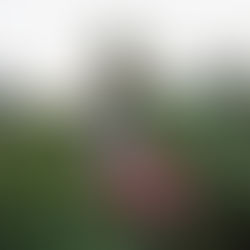
When working on your landscape and garden areas, an important concept to consider is mulching. There are many benefits to mulching! Number one is water conservation and it can add a fresh, finished look to your landscape. So here is some basic information of the types of mulch, the benefits of mulching, and some how-to’s.
Types of Mulch
There are two basic types of mulch; organic and inorganic. Organic mulch is comprised of natural materials that will break down over time and add nutrients to the soil. Inorganic mulch is made up of material (like rock) that won’t decompose.
Organic Mulch
Organic mulch comes in many forms like grass clippings or wood chips from tree bark, or even shredded redwood, and each has consideration of where they might best work for your landscape.
Grass clippings are great when you have a lawn, they can be used in vegetable gardens or under bushes but be sure not to use any clippings treated with herbicides or pesticides.
Woodchips are great for water conservation, preventing soil erosion, and weed control.
Cocoa mulch is an interesting and unusual option, it should applied in a thinner layer and is beautiful with a rich dark color. Bonus, it has a chocolatey smell that lasts 2-3 weeks. The downside, cocoa mulch is pricier but it does last longer as you use less. (Note: cocoa mulch does contain theobromine and caffeine, ingredients that harm dogs. If a 50-pound dog swallows 5.3 ounces, seizures can occur; 9 ounces can cause death).
Straw is a great option, especially for vegetable gardens. If you choose this option, be sure to ask for clean, weed-free straw and if you are able, take the time to treat the straw before laying it down as straw can contain viable seeds.
Chopped leaves, a handy option in the fall as they are a readily available source, but be sure to chop them up with a lawnmower fitted with a grass catcher first. Otherwise, the leaves might become matted. Wet leaves after applying them to keep them from blowing away.
Inorganic Mulch

Inorganic mulch is often available in forms like rock, lava rock, stone, and even recycled tires.
Recycled tire is a great option when planning to mulch around play areas for kids and comes in bright fun colors like red and orange. This material seems to have an impact absorption which also adds a little bit of safety to the landscaping as well.
Lava Rock is lighter weight than traditional stone and it has a lovely finished quality to nice areas. It might cost a bit more for the initial investment, but that will pay off as lava rock lasts forever. A couple notes: be sure to place in an area that doesn’t require much gardening maintenance as the edges are sharp. Also, be sure of where you put it, once lava rock is down, it is difficult to move.
Stone is commonly used in xeriscape gardening. It is handy as it absorbs heat during the day and release it to the plants at night. This also lasts longer and you can do with a thinner layer to cover the ground. However, the heat absorption bonus can cause faster water evaporation from soil and is most frequently with dark-colored stones.
Benefits
There are many great reasons to use mulch in your garden or landscaping. To name a few mulching:
Protects soil from erosion
Reduces compaction from the impact of heavy rains
Conserves moisture, reducing the need for frequent watering
Maintains a more even soil temperature
Keeps fruits and vegetables clean
Keeps feet clean, allowing access to garden even when damp
Provides a “finished” look to a garden/landscape
Fall and winter: insulate plants.
Spring and summer: hold in moisture and decrease weeds.
How-To
When mulching, you will need to look at the specific type of mulch you are using to determine the best amount to use. You will find that certain mulches like rock or grass clippings will need thinner layers. When piled too thickly, grass clippings clump, and become slimy as it decomposes creating a less than pleasant odor. Rock can get too heavy if too much is used. So take care in how much you use when choosing your mulch type.
Overall, for wood (pieces and shredded alike) the rule of thumb is your application should be about a four-inch layer over most of the area. Near the plant, however, barely cover ground as it will hold in too much moisture and cause the plant to rot. Newer trees, be sure to keep a space of six-inches between the tree and the mulch also to prevent rotting.
Remember when using wood product, it will leach nitrogen from the soil as it breaks down so be sure to add a fertilizer with nitrogen additive to the soil prior to laying your mulch.
Final note, typically organic mulches will need to be replenished about every six months.
There are many options and style available for mulching and Pacific Vista Landscape Services wants to help you find the perfect one for your home or business. When planning a garden or preparing to change your landscaping, be sure to contact Pacific Vista and we would be happy to discuss the best option for your plans!






































